Women always wore buckle shoes with the festive Schwalm costume. Men also had, in addition to the high-necked buckle shoes, lace-up shoes or boots.
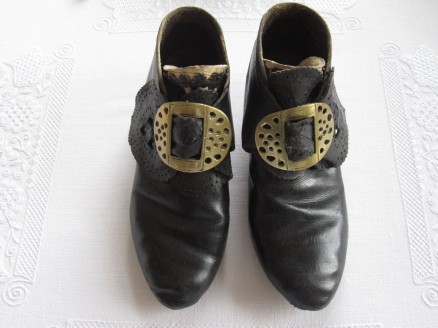
The buckle shoes had rounded toes. The heels were not high and some were smaller than the shoes so that it looked like small blocks lay below the shoes.

For better footing and longer life some heels were shod.
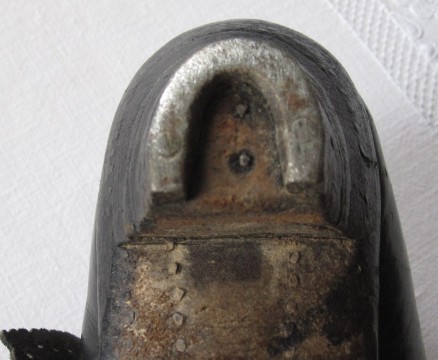
For women’s shoes the shoemaker had only one shoe last, this means, there was no left or right shoe; both were the same and the ladies would alternate wearing them on the left and right feet so that the shoes would wear equally.
Mostly, the shoes were made from calfskin. The punch-decorated tongues of the women’s shoes were serrated at the top edges and accented with white sheep hide.
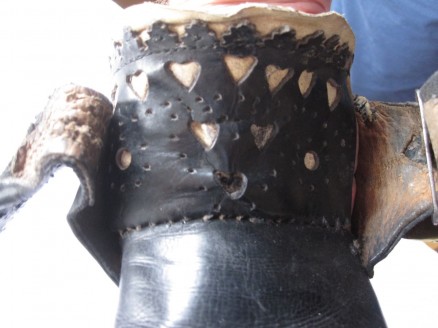
The tongues of the men’s shoes had red piping.
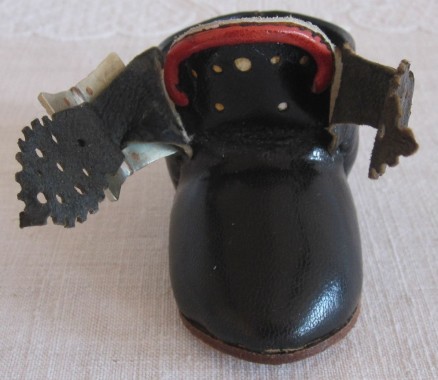
On the sides, there were large tabs in a shape similar to a heart – the “ears”.
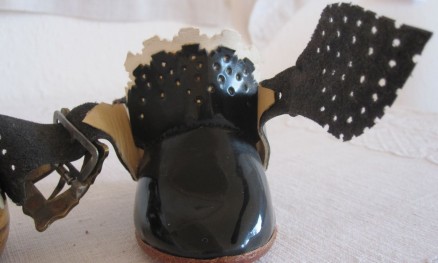
These were decorated with hole ornamentation made with prickers. For marriage shoes, the year was also pricked into the tabs.
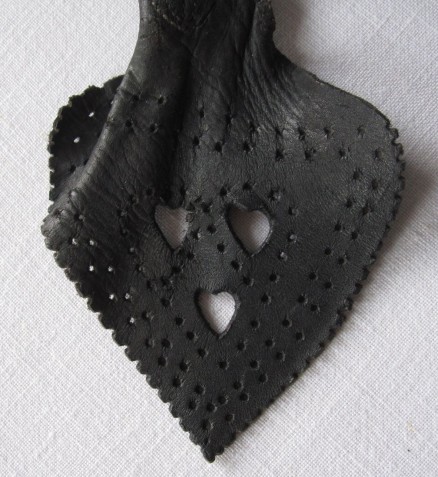
The “ears” were slid through buckles and draped. Thus the Schwalm buckle shoes made an extravagant impression.
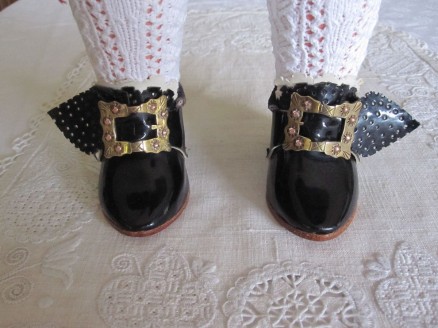
Besides the buckle shoes, the Schwalm women had some more comfortable shoes, the so-called “Kommod” (=commodious) shoes. With flat heels and low cut, they were worn for everyday life and during old age.
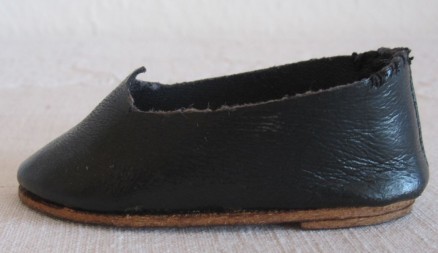
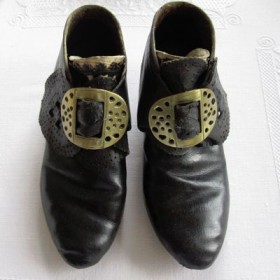

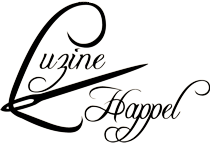
hey luzine,
ich hab zwei anmerkungen: also auch die männerschuhe sind über einen leisten gearbeitet und worauf die schwälmer die ich kenne, achten: den schuh immer am selben fuß tragen, damit man sich den schuh an einen fuß anpasst.
Hallo Sabine,
danke für den Hinweis – aber ich habe andere Informationen. Bevor ich meine Darstellungen veröffentliche, recherchiere ich immer alles gründlich und sorgfältig. Meine Darstellungen sind durch verschiedene seriöse Quellen belegt.
Beste Grüße
Luzine
Vielen Dank für diesen informativen Artikel.
Im Zusammenhang mit dem Einlaufen neuer Schuhe sei die Redewendung entstanden, wenn’s noch zwickelt, soll man halt “nasse Wiese geh’n” – also mit den neuen Schuhen durch taufeuchtes Gras schlurfen, damit das feuchte Leder geschmeidiger wird und sich dem Fuß besser anpasst.
Guten Tag, ich habe das Problem, dass mir ein Auktionshaus Trachtenschuhe (mit hoher Wahrscheinlichkeit Schwälmer) als Barockschuhe verkauft hat. Dies habe ich leider erst im Nachhinein erkannt. Frage: Kann man solche Trachtenschuhe anhand von Bildern oder einer Begutachtung der Objekte eindeutig als Trachtenschuhe identifizieren und damit Barockschuhe ausschließen? Und, falls sich das Auktionshaus darauf einlässt, wäre es bei Ihnen oder in einem Ihnen bekannten Trachtenverein möglich, Unterstützung zu bekommen?
Danke: A.Dehner
Guten Tag Frau Dehner,
mein Interesse gilt hauptsächlich der Schwälmer Weißstickerei. Die Schwälmer Tracht wird dabei nur nebenbei abgehandelt, da die Weißstickerei ein Teil der Tracht ist und beides zusammen gehört.
Mit Barockschuhen kenne ich mich überhaupt nicht aus. Daher kann ich Ihnen leider auch nicht weiterhelfen. Vielleicht ist Frau Heidrun Merk vom Schwälmer Dorfmuseum Holzburg eine geeignetere Ansprechpartnerin.
Viel Erfolg
Luzine Happel